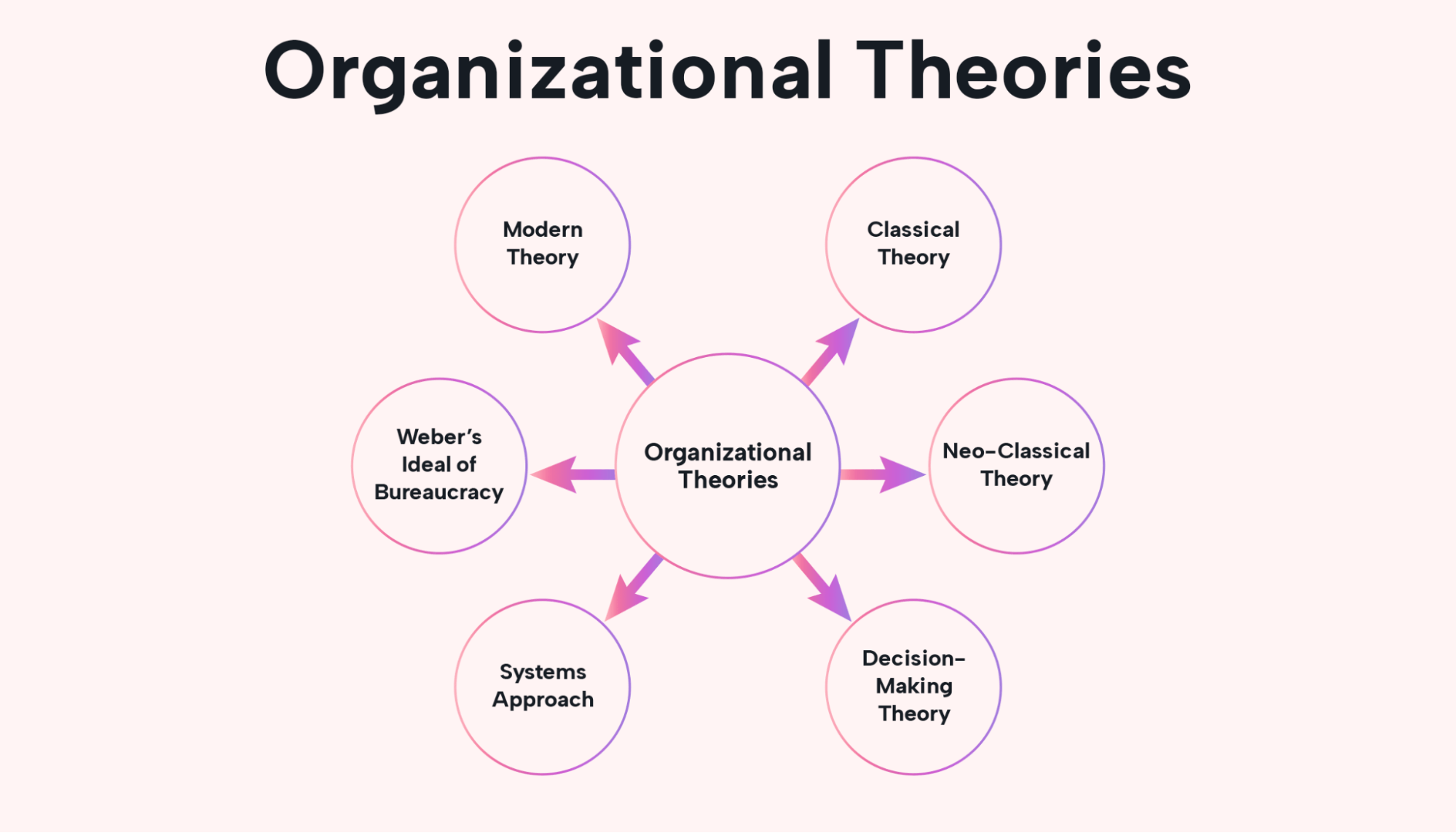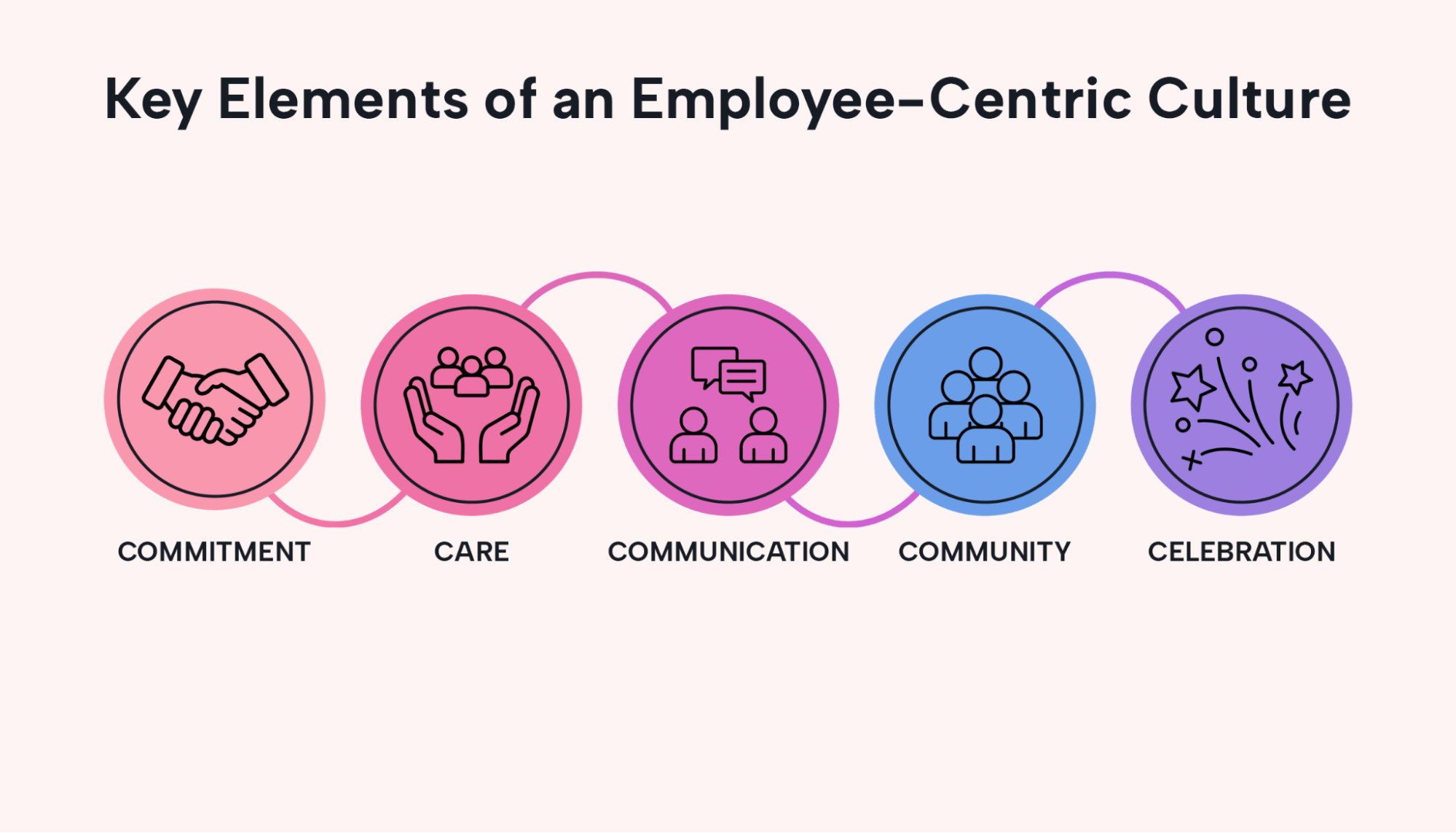When Steve Jobs returned to Apple in 1997, he faced a company on the brink of bankruptcy. Through a series of calculated organizational changes that involved cutting unprofitable projects and focusing on innovative technologies, he transformed Apple from a failing business into one of the world's most profitable and iconic brands.
What Jobs understood was the power of organizational structure and theory.
Like Jobs, understanding how your company is organized can help you identify inefficiencies, improve productivity, and, ultimately, improve your bottom line.
In this article, we break down different organizational theories and explore ways to use them to drive your company’s success.
What are organizational theories?
Just as architects rely on blueprints to ensure the structural integrity of a building, business leaders use organizational theories to sculpt their corporate framework. Organizational models help us understand how an organization functions — from its structure and management to its operations and culture.
Originating in the early 20th century, organizational theories began as principles for maximizing task efficiency. Over time, they evolved to consider how human behavior impacts organizational success. Today, they encompass a broad spectrum, from market changes to technological advances.
Organizational theories help you figure out how an organization ticks and offer ways to optimize overall performance and resilience.
Why is understanding organizational theories important?
The foundations we lay determine the heights we can achieve. Understanding organizational theories helps the company make decisions that align with its core values, objectives, and vision. Organizational theories bring the foundation we need for:
Organizational efficiency
Forty percent of workers believe that a complicated organizational structure is the leading cause of inefficiency in the company.
Learning about organizational theories will help you find the most suitable framework for your business, which will let you trim the fat, make quicker decisions, and operate more efficiently. It's like tidying up a cluttered room — everything feels and works better afterward.
Employee engagement and retention
Certain organizational theories are human-centric. They focus on interpersonal relationships, communication, and creating a supportive work environment.
 |
These theories foster a sense of belonging and purpose by prioritizing employee well-being and roles within the larger organizational ecosystem. Putting these theories into practice boosts job satisfaction and engagement, leading to lower employee turnover.
Market adaptability
Research has shown that companies that quickly adapt are more than 40% less likely to go bankrupt. Organizational theories can guide your business to pivot in response to market shifts, helping you stay ahead of change.
Adaptability is even more vital in fast-moving industries like technology and finance. Building agility into your company’s structure enables you to always be one step ahead of the competition.
6 types of organizational theories
Let's delve into six of the most influential organizational theories and their unique attributes:
 |
1. Classical or traditional theory
Think back to old-school assembly lines, where each person had a specific task, and the final product depended on everyone completing their work.
The classical or traditional theory operates on a similar principle. There’s a clear hierarchical structure and division of labor, where the CEO guides middle management, who then directs the employees. Everyone has a clear-cut role and knows what’s expected of them.
Pros:
- Everyone knows what they should do — no confusion or overlap
- Fosters accountability because it’s easy to see who controls what
- Jobs get done quickly since everyone has their specialty
Cons:
- The organization can become rigid and resistant to change
- It may not address employees' emotional and social needs
- Could stifle creativity and innovation
2. Human relations or neo-classical theory
Imagine a friendly office environment where coworkers ask about each other’s weekends, share lunch breaks, and genuinely care about each other. This is an example of human relations or neo-classical theory in work.
Instead of being task- and result-driven, this theory emphasizes that employees are humans first. It places importance on social interactions and the well-being of the staff.
Motion’s article on different work styles and how to work with each is an excellent resource for those interested in practicing this theory.
Pros:
- Happier employees often leads to more productivity
- Lower chances of workplace conflicts
- Fosters a sense of community and belonging
Cons:
- Difficult to scale as a company grows
- Risks prioritizing employee emotions over business goals
- Not all employees resonate with a highly social work environment
3. Decision-making theory
When you’re caught at a crossroads, you need to make a decision. The decision-making theory focuses on navigating these crossroads effectively.
Rather than relying solely on top-tier management or a single entity to make decisions, this theory advocates for collaborative decision-making processes that involve various stakeholders.
Pros:
- Encourages diverse perspectives
- Creates a sense of ownership and responsibility among team members
- Reduces the risk of decision bias or oversight
Cons:
- Can be time-consuming with too many voices involved
- May lead to conflicts or disagreements if not managed well
- Could result in choice paralysis if there's a lack of clear leadership
4. Systems approach
The systems approach sees the business as a puzzle. Each piece (or department) of the puzzle is interconnected. So, instead of just focusing on one piece when there's a problem, we should see how all the pieces fit together and affect each other. We can only understand and solve the problem by looking at the whole picture.
Pros:
- Gives a holistic view of the company
- Recognizes ripple effects and helps solve issues with a broader perspective
- Enables quick adaptation to changes
Cons:
- Intricate social relationships might pose management challenges
- The interconnectedness can slow down decision-making processes
- Risk of generalization
5. Weber’s ideal of bureaucracy
Ever heard the term "red tape"? It has roots in bureaucratic systems. Weber's ideal of bureaucracy was proposed by Max Weber, a German sociologist who believed in the need for a highly structured organization with well-defined roles, hierarchies, and standardized procedures. Weber argued that when executed right, bureaucracy could be the most rational and efficient form of organization.
While it’s similar to the classical or traditional theory mentioned above, it stresses a set system of rules and procedures, impersonal decision-making, and merit-based promotions.
Pros:
- Clear chain of command
- Consistency and predictability in procedures
- Merit-based programs prevent favoritism and biases
Cons:
- Multiple layers and stringent rules can create bottlenecks
- Feelings of being just 'a number' in the system
- Organizations may become less adaptable to new challenges or changes
6. Modern theory
Modern organizational theory takes a multidimensional approach inspired by classical, behavioral, and systems theories. It views companies as adaptable and evolving entities. Modern theory is built around the idea that businesses should be dynamic, adaptable, and evolve with internal and external changes.
Pros:
- Businesses can better weather unforeseen challenges and disruptions
- Decentralized decision-making empowers employees
- Creates forward-looking businesses
Cons:
- Always changing may cause a business to stray from its original mission or values
- Too many changes too quickly can lead to faster employee burnout
- Demands significant resources in terms of time and money
Real-world organizational theory examples
Take a look at two real-world workplace examples where specific theories have been successfully implemented:
Toyota’s systems approach
In the bustling factories of Japan, Toyota needed a way to produce high-quality cars efficiently without the cost of overproduction and waste. They responded to this challenge by implementing the Toyota Production System (TPS).
Toyota began seeing their factories as not just different departments but as a cohesive unit. Each section of the production line played its distinct role and collaborated.
For example, their "just-in-time" inventory method ensured that car parts arrived only when needed, no machine was idle, and no resource was wasted.
Through this systems approach, Toyota told a story of efficiency and quality, where every piece mattered, and the sum was more significant than its parts.
Google’s employee-centric culture
While Google is globally recognized for its powerful search engine and innovative tech products, it’s also famed for its work culture. Google won the best global culture award in 2023.
From the outset, Google believed that happy employees breed innovation. Rather than treating employees as production machines, it created an environment that welcomed open communication and championed employee well-being.
 |
Besides nap pods and their ‘20% time’ initiative (where employees spend 20% of their time working on what they think will benefit Google), Google recognized that employees need to feel valued, heard, and motivated to bring more to the table.
Brainstorming sessions, feedback loops, and transparency between management and staff underscored Google's commitment to this ethos. As a result, it has secured a spot on Glassdoor’s list of the best places to work for 15 consecutive years.
How do you choose the right organizational theory for your business?
Choosing the right organizational theory for your business requires a deep understanding of your company's objectives, culture, challenges, and external environment. Consider these four tips to help you find the perfect fit:
1. Match your organizational goals
The organizational theory that you choose should align with your organizational goals. You can start by nailing down your long-term goals. What do you envision for your company in the next 5, 10, or even 20 years? Once you've got a clear picture, select a theory that best supports those ambitions.
For example, if you envision running a business that responds quickly to disruption, the decision-making theory could be a good fit because it emphasizes collaborative and quick decision-making processes.
 |
With your theory in place, don't just set it and forget it. Tools like Motion can help you track and measure your progress against common goals. Keep the team accountable and gather data-driven insights into how well the theory works.
2. Assess culture fit
Every company has its unique vibe, ethos, and values. When picking an organizational theory, it's essential to ask: does this theory mesh well with our current culture?
Some businesses might choose a theory that integrates well into the existing culture for organic adoption. On the other hand, if your company is on the cusp of significant changes or you feel the current culture isn't serving your objectives, it might be time for a complete revamp.
Remember, a mismatch between theory and culture can cause friction, so choose wisely based on where you see your company's culture heading.
3. Weigh the pros and cons
Begin by dissecting each organizational theory and listing its strengths and weaknesses. But don't stop there. Next, consider your organization's needs, challenges, and existing processes. How might each theory either support or complicate these factors?
Take the systems approach, which emphasizes interconnectedness between departments. It's fantastic for companies that benefit from cross-departmental synergy. However, would this method suit a business that needs a high degree of autonomy?
An effective way to evaluate potential organizational theories is to gain insight from your team. Motion allows you to gather diverse viewpoints in one central platform. Use this tool for collective brainstorming in your decision-making process.
4. Consider the practicality of implementation
Before you decide on a theory, evaluate the practicality of implementing it into your daily operations. What available resources are there? How will this shift affect the current workflows? And, importantly, what's the learning curve for your team?
Motion offers tools that allow you to check everyone’s bandwidth and schedule.
 |
Knowing the availability and workload of your team is crucial in assessing how easily a new organizational theory can be implemented.
Motion helps you integrate organizational theories
Adopting an organizational approach is a commitment. It requires continuous tracking, assessment, and adaptability. As you become familiar with your chosen theory, Motion stands as a reliable partner. We enhance transparency in communication, streamline workflow management, and foster collaboration tailored to your needs.
Try Motion for free now.





